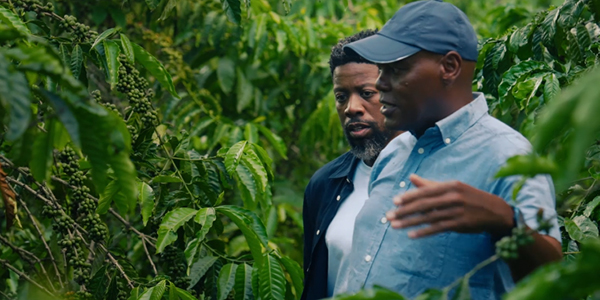Unlocking intra-African trade potential
The continent – home to over 60% of the world’s uncultivated arable land – holds the promise of feeding itself and the world, but only if it can effectively convert potential into productivity through sustained agricultural growth.
At the heart of this transformation is Standard Bank Group, Africa’s largest bank by assets and footprint, operating in 20 plus countries with the bold purpose of driving Africa’s growth.
In Uganda, the Group’s local subsidiary – Stanbic Bank Uganda – is actively putting this into practice by placing agro-industrial growth and intra-African trade at the centre of its Corporate and Investment Banking (CIB) strategy, particularly focusing on intra-African trade corridors in Uganda.
“Our role goes far beyond finance,” saysPaul Muganwa, Executive Director and Head of CIB at Stanbic Bank Uganda. “We are reshaping value chains, linking farmers to processors, processors to markets, and markets to capital, both in Uganda and across Africa through comprehensive agribusiness solutions.”
From external capital to internal trade
For decades, agriculture in Africa relied heavily on foreign investment. Muganwa argues that the next phase of growth must be internally focused, grounded in the continent’s fundamentals, and driven by its own systems. “We are now at an inflection point,” he says. “To unlock Africa’s potential, we must invest in the soft and hard infrastructure that enables trade, like power, roads and digital networks, as well as regional policy harmonisation.” In Uganda and across the East African region, Stanbic is working closely with governments and regulators to address these enablers. From co-financing energy transmission lines to facilitating cross-border policy dialogue, the bank is as much a strategic advisor as it is a financier. “Infrastructure is not just a cost issue – it’s a trade issue,” Muganwa notes. “Without access to reliable power, agro-processing can’t thrive. Without roads and rail, markets stay fragmented.”
Bridging borders: a seamless client experience
With a footprint that mirrors Africa’s regional trade ambitions, the Group’s strength lies in its ability to offer integrated solutions across borders. This regional capability is a significant differentiator for clients with cross-country ambitions. “If you are a client operating in Uganda and expanding into Kenya or Zambia, we ensure your experience is seamless,” Muganwa explains. “Behind the scenes, our product specialists, risk teams, and operational systems are fully aligned.” This harmonisation also reflects the Group’s commitment to the African Continental Free Trade Area (AfCFTA), which it has championed through capital solutions, advisory, and policy engagement. “AfCFTA is not just an agreement, it’s a platform,” he adds. “We are helping shape it from the inside out.”
Digitising trade, empowering value chains
Beyond institutional support, the bank is also investing in digital platforms that connect Africa’s value chains from the ground up. A notable innovation is a digital trade interface designed to connect African importers with embedded suppliers across jurisdictions. This platform hosts embedded payment and credit solutions, streamlining transactions for SMEs and large corporates alike.
“We are applying the same model locally,” Muganwa says. “We know the producers. We know the buyers. What we are building is the digital bridge between them.”
This matters not just at the macro level, but also for micro-traders and farmers operating across borders. Stanbic’s digital and mobile money platforms, including high-penetration USSD, enable informal trade to thrive by democratising access to capital and currency.
“Between 60-70% of our mobile transaction volumes are on USSD,” Muganwa reveals. “That’s financial inclusion at work and enabling cross-border trade, even in rural areas.”
Funding agro-industrial growth with the right capital
Agro-processing, in particular, requires long-term, patient capital and a nuanced understanding of risk. Here, Stanbic acts as a financial intermediary, linking development finance institutions with local exporters, and structuring blended agricultural trade finance solutions that reduce risk for clients. “We are seeing capital from Europe, China, and DFIs targeted at African agro-industrial expansion,” Muganwa says. “Our job is to channel that capital efficiently to where it’s needed most, and with the right structure.”
A case for cooperatives
Food remains the continent’s most traded and most critical commodity. Crops like cassava, a staple in both West and East Africa, are ripe for structured trade if value chains are formalised. “We believe in organised value chains,” says Muganwa. “Farmer cooperatives aren’t just social groups. We regard them as commercial vehicles. They ensure quality, consistency, and bargaining power.”
In this, Stanbic sees not just a business opportunity, but a continental mandate: to make agriculture sustainable, inclusive, and scalable.
The continental vision
Standard Bank's work in unlocking intra-African trade is part of a broader continental agenda to move Africa beyond raw commodity exports and towards value addition, regional integration, and self-sufficiency. “Africa can feed itself and the world,” Muganwa concludes. “But only if we build the right systems and finance them smartly.
That’s the magic of what we do.”
This article was originally featured on CNBC.

